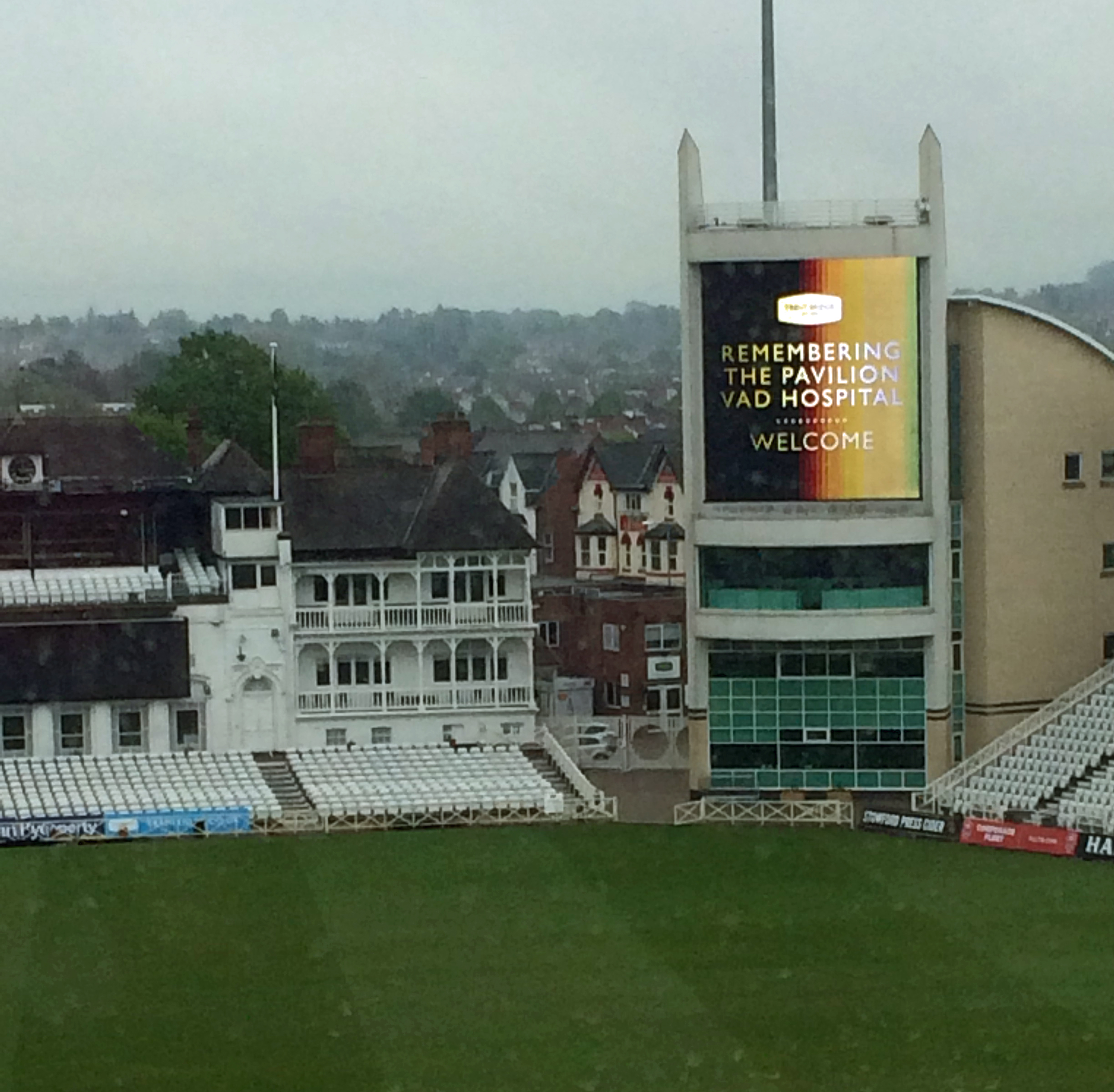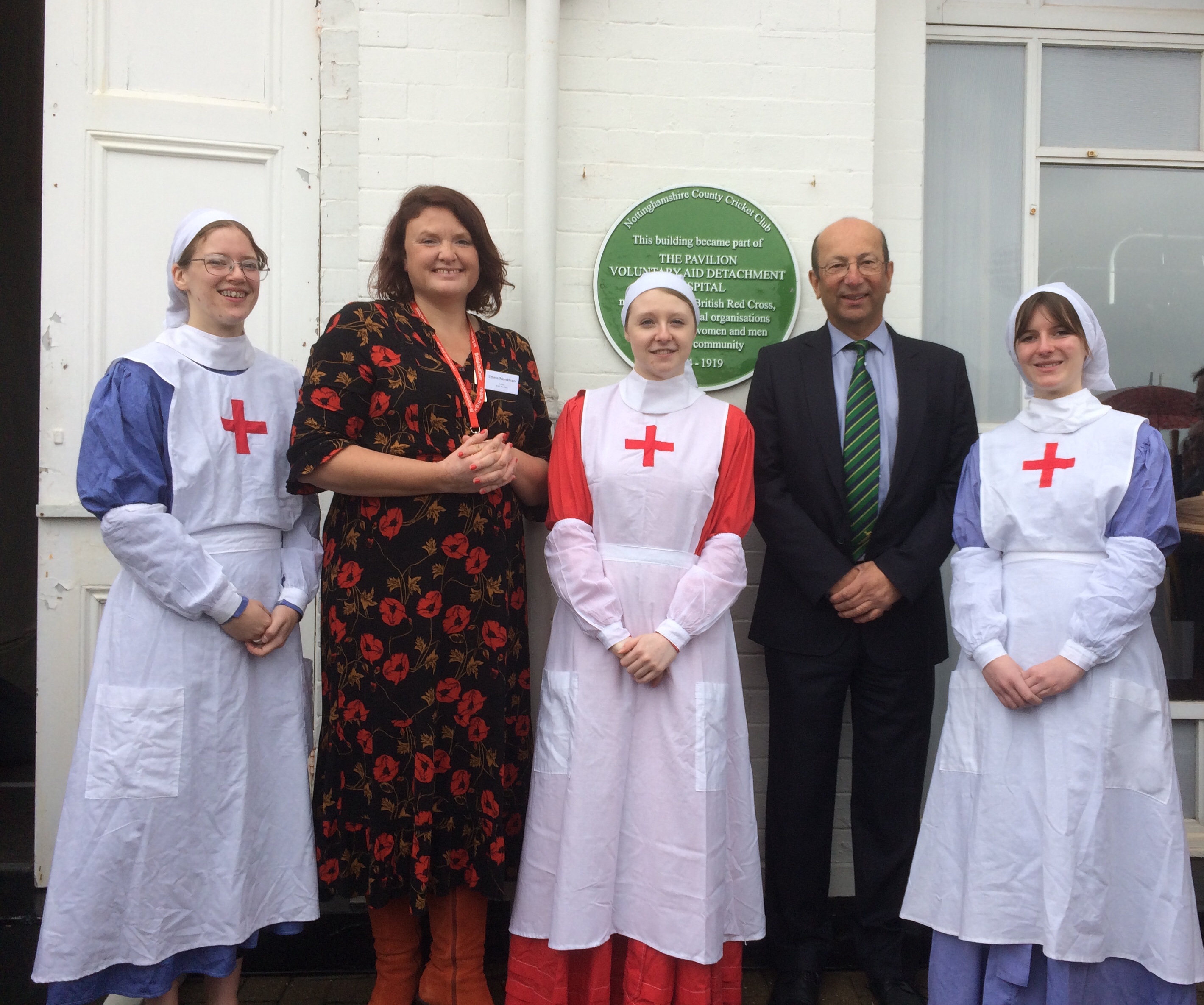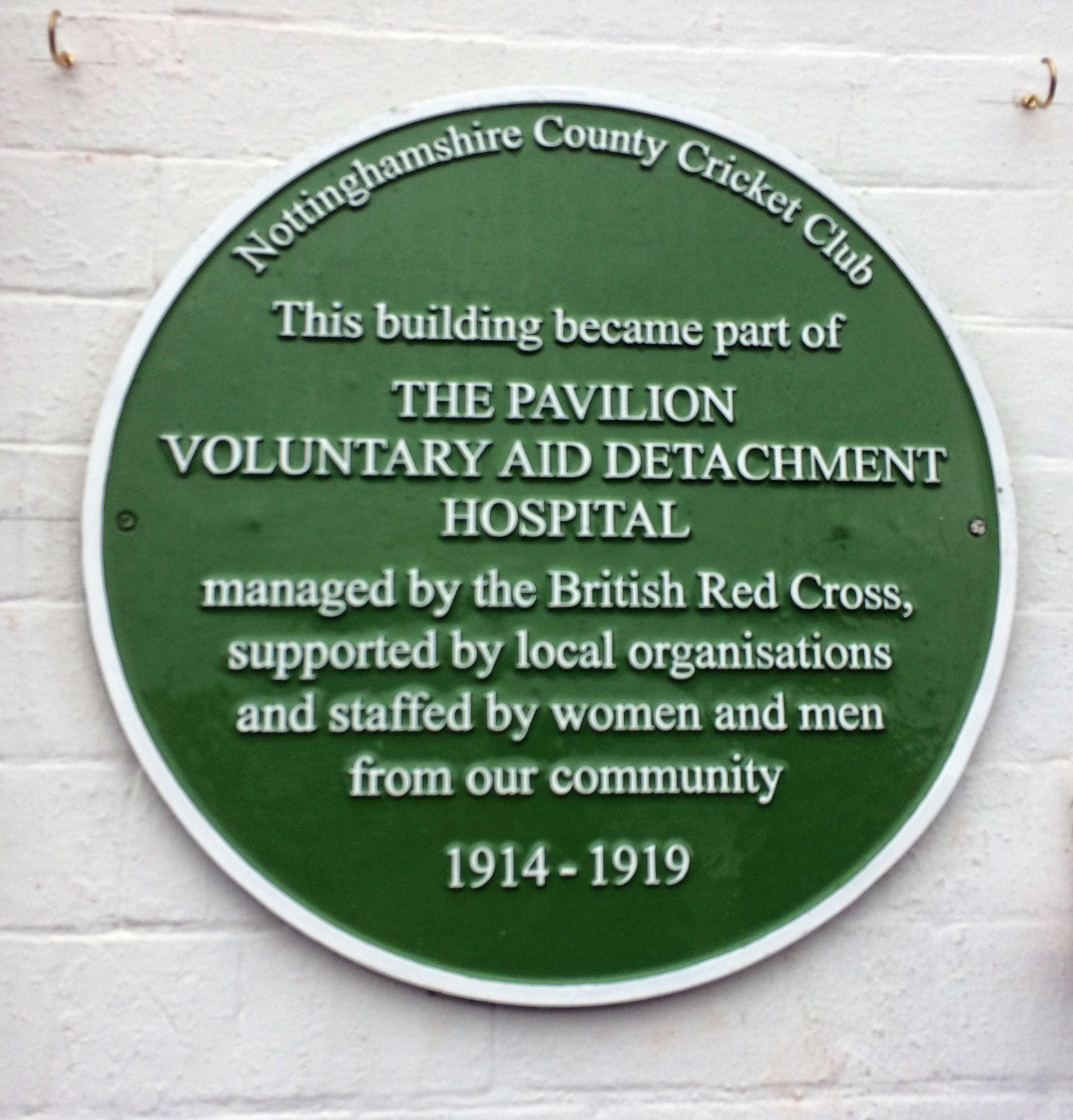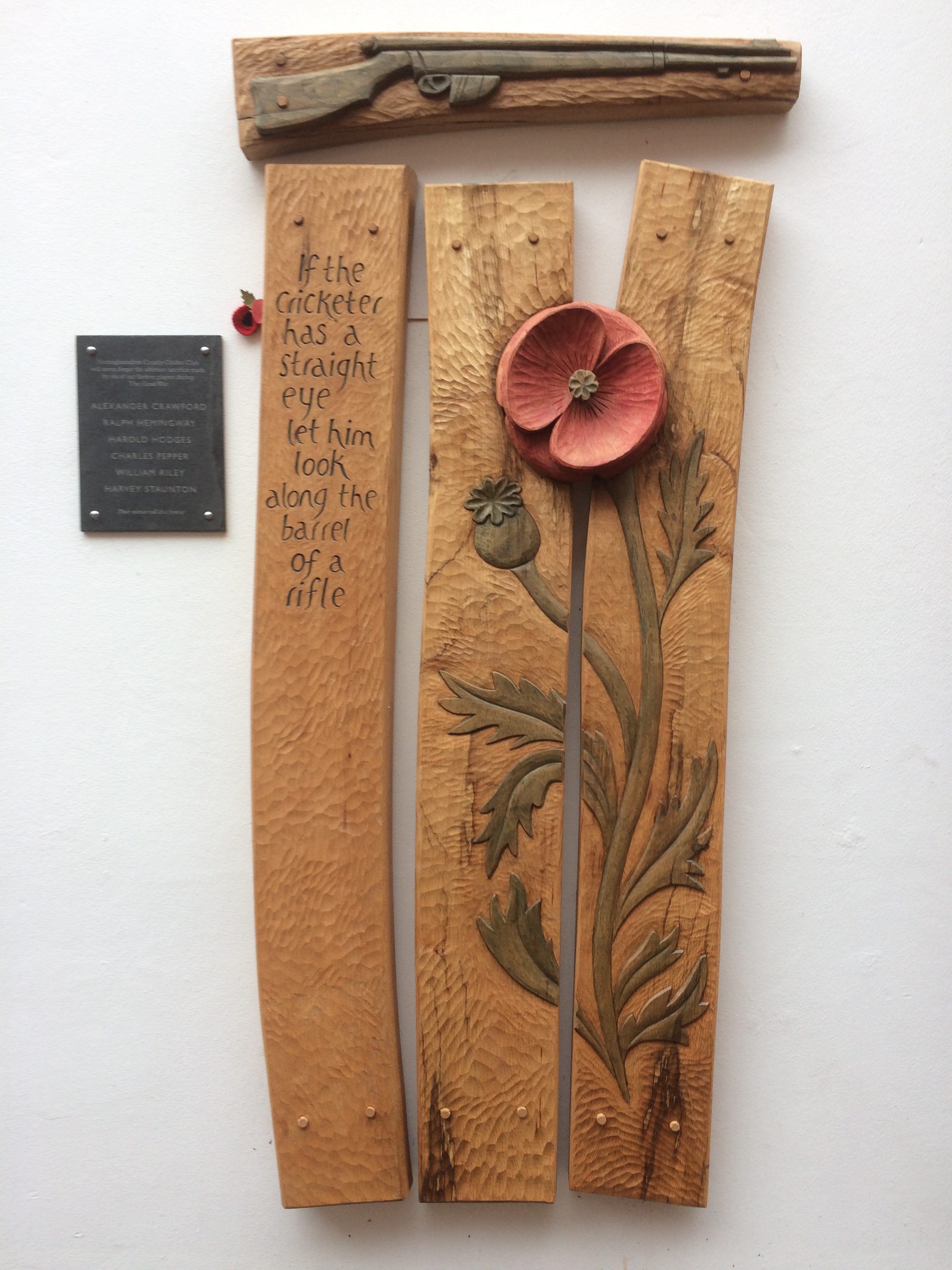Trent Bridge Pavilion VAD Hospital Commemoration

Trent Bridge Pavilion (building with balconies,left of score stand) 8th May 2019.
On 7th August 1914, the War Office requisitioned various buildings in West Bridgford and converted them to temporary hospitals. Trent Bridge Cricket Pavilion was one of them. It opened as a British Red Cross auxiliary hospital on 9th December 1914. Twenty patients arrived on 24th January 1915, brought there from Leicester Military Hospital suffering from frostbite contracted on the western front. By the time the hospital closed in May 1919, thousands of men had been treated and the Pavilion was regarded as one of the best auxiliary hospitals in the country. It was put on record that its success under the presidency of Lady Bruce and command of Henrietta Heymann was due largely to the contributions made by the people of West Bridgford and Notts County Cricket Club, who had provided the buildings. The hospital was staffed by a team of female Red Cross volunteers (supported by a small number of professionally trained nurses and doctors) known as VADs, whose vital work has finally been recognised.
Notts County Cricket Club (NCCC) held a commemorative event on 8th May 2019 to mark the centenary of the closure of the hospital and underline the essential work performed by its Red Cross volunteers. The event was co-ordinated by Steve LeMottee, NCCC heritage officer and organised by club committee members and their heritage volunteers. Representatives from the Red Cross, supporting organisations and descendants of some who had worked at the hospital were in attendance. Two members of Radcliffe on Trent WWI Group were present, invited in recognition of their research on the pavilion hospital. The group’s research, ongoing since 2016, has included the transcription of VAD records, identifying nurses and general service VADs who worked at the Pavilion, uncovering the ‘Ulster connection’ of Lady Bruce and bringing to light various letters and reports concerning the hospital. Their findings have been presented over the past eighteen months to local history groups, published in the Nottinghamshire Local History Association journal and shared with heritage volunteers from NCCC.
The commemorative event programme included the investiture of the Nottinghamshire President of the British Red Cross, Andrew Farrer and a talk on the history of the Pavilion. The highlight of the day was the unveiling of a plaque on the Pavilion outer wall commemorating the role of the British Red Cross, local organisations and hospital staff.

Unveiling the plaque
The plaque was unveiled by Emma Monkman, Trustee, British Red Cross and Richard Tennant, Chairman, Notts County Cricket Club. Three students from Nottingham Trent University – Jocelyn Cook, Katt Hanson and Alex Thomas – helped to recreate the hospital atmosphere by dressing as WW1 Red Cross VADs and a commandant.

Martyn Shaw, Heritage Volunteer, gave a fascinating tour of the buildings and grounds in the afternoon. Guests were able to visit pavilion rooms formerly used as hospital wards, view the library, talk to the archivist, Peter Wynne Thomas and imagine what working as VADs at the Pavilion would have been like a hundred years ago. They were also shown the modern facilities at the Radcliffe Road end, including the broadcasting rooms, while learning about the history of the club and its players. Another highlight was being shown the memorial to the six club cricketers who lost their lives in WW1: Alexander Crawford, Ralph Hemingway, Harold Hodges, Charles Pepper, William Riley and Harvey Staunton.

The memorial, unveiled in 2018, was crafted by Nottingham artist Martin Sommerville using locally-sourced oak and is located at the side of the steps to the Pavilion.
Notts. County Cricket Club welcomes thousands of visitors to its Trent Bridge grounds every year for local, national and international fixtures. The commemorative plaque, together with the memorial to the cricketers, will allow visitors to catch a glimpse of the club’s place in the tragic history of the Great War while enjoying a memorable day out.
Rosemary Collins
